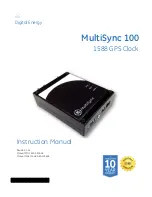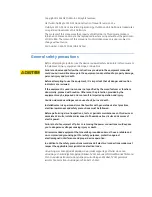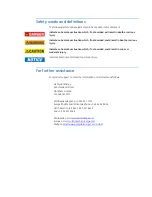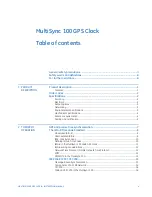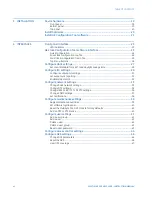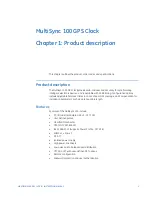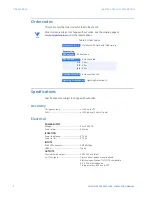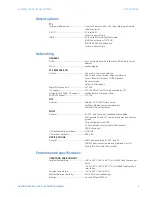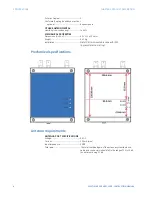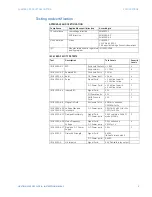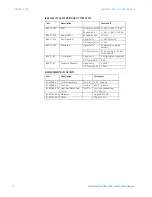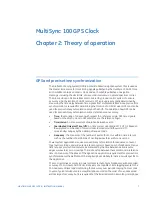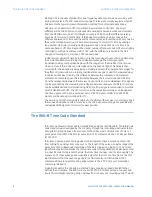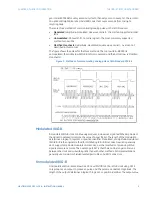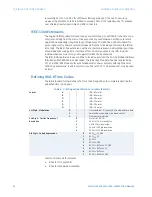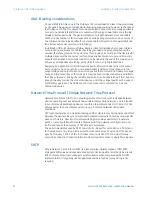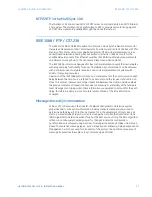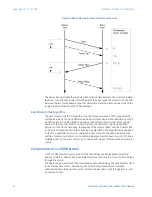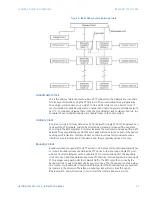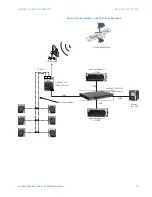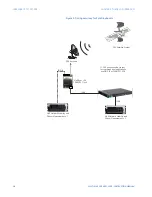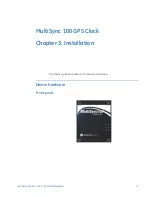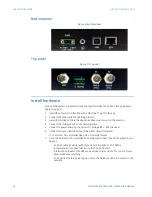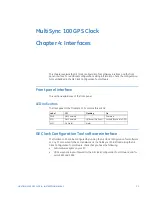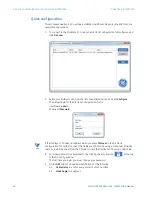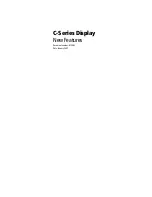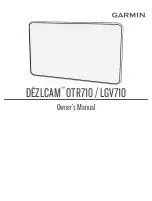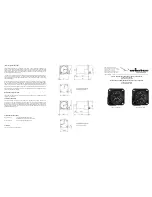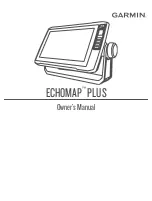
CHAPTER 2: THEORY OF OPERATION
THE IRIG-B TIME CODE STANDARD
MULTISYNC 100 GPS CLOCK – INSTRUCTION MANUAL
9
year code (BCDYEAR) counts years and cycles to the next year on January 1st. There is also
an optional Straight Binary Seconds (SBS) code that counts seconds from midnight,
recycling daily.
There are three methods of communicating analog pulses in the IRIG Standard:
•
Modulated
(amplitude-modulated, sine wave carrier) - the method supported in older
IEDs
•
Unmodulated
(DC level shift, no carrier signal) - the most commonly supported
method for new IEDs
•
Modified Manchester
(amplitude-modulated, square wave carrier) - a version not
described in this manual.
The figure shows the pulses for the three methods. The top row (IRIG-B B000) is
unmodulated, the middle row (IRIG-B B120) is modulated, and the bottom row is Modified
Manchester.
Figure 1: Methods of communicating analog pulses, IRIG Standard 200-04
Modulated IRIG-B
A modulated IRIG-B clock continuously produces a sine wave signal with the amplitude of
the signal modulated to indicate the value of a specific bit. The length of the modulation
determines a logical 0, logical 1, or position identifier. Modulated, or amplitude-modulated
(AM) IRIG-B is the original method for distributing IRIG-B time codes. New IEDs generally
don't support amplitude-modulated time codes, as other methods of producing IRIG-B
signals are more accurate. The advantage to AM is that there can be longer cable runs
between the clock and subscribing IEDs than with other methods. AM implementations
generally use coaxial or shielded twisted pair cables and BNC connectors.
Unmodulated IRIG-B
Unmodulated IRIG-B is also known as DC Level Shift (DCLS). An IRIG-B clock using DCLS
only produces an output to produce a pulse, and the pulse is a constant magnitude. The
length of the output determines a logical 0, logical 1, or position identifier. The output value

